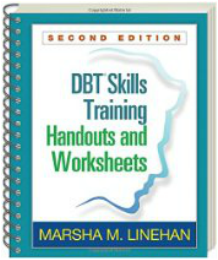For a balanced life, it’s important to maintain some separation between work and relaxation. Without the separation of space, this can be difficult to do. Psychologically, we take cues from our environment as to when it’s time to be alert and productive, physically active, eating, or relaxing. Here are some tips to keep you productive, connected, and balanced if you find yourself working from home for the first time.
1. Keep your regular schedule as much as possible. During chaotic times, this can help us remain calm and centered. If you normally wake up at 6:00 AM, continue to do so. If you clock in at 8:00 AM and leave work at 6:00 PM, continue to do so. If you take lunch at noon, continue to do so. You may be tempted to sleep in and start work later, but then you’ll have to work later and cut into personal time (or feel guilty if you didn’t put in a full workday.) Or, you may be tempted work more than you usually would because you don’t have your normal routine of leaving the office to go home. Set reminders on your phone to keep your usual time boundaries in place.
2. Shower and get dressed. As tempting as it is to lounge around grungy and work in your PJ’s, it’s not super conducive to productivity. Ok, maybe you relax the hair and makeup routine if you’re not meeting people face-to-face, but maintaining your usual personal grooming standards can help you feel awake and ready to work. (And less likely to nap during the day.) The same goes with clothes. Perhaps you wear comfy pants and ditch the tie, but sticking to business casual may help with your sense of “I’m at work.” And when you’re done working, put on your comfy clothes to signify “I’m at home, work is over.” Play with this and see what works for you.
3. Exercise! When you don’t have to leave the house, it’s natural be more sedentary. With gyms and yoga studios closed, your normal workout routine has been disruptive. BUT you’ve some extra time since you don’t have to commute – why not use it to exercise? There are many great workout options that don’t require a gym. Walk or run outside keeping the recommended 6 feet of social distance to prevent the spread of COVID-19. Do some High Intensity Interval Training using a Seven Minute workout app and your favorite playlist. Stay flexible and centered with some online Yoga videos. Here’s one of my favorites: https://www.doyogawithme.com/content/30-day-challenge
4. Create a workstation separate from where you relax. For most people, the couch is the place where at the end of the workday we kick off our shoes and take a break. If you work from your couch, you’re now overwriting couch as a safe place to relax – or the relaxation of the couch may be interfering with your ability to work. In addition, most couches don’t offer adequate back support if you are working on a computer all day, and can lead to back pain. Instead, set up your computer at a table or desk, preferably with an adjustable office chair or straight back chair where you can sit with good posture. If you set up at the dining table, be sure to clear work supplies off before eating.
5. Stay productive by working in spurts and taking breaks. People can focus well on a task for about 50 minutes. (Explains why therapy sessions are about 50 minutes long, right?) So, pick a task and commit to stay focused on it for 50 minutes without distraction from internet, laundry, pets, etc. Then, take a 10-minute break. Get up, stretch, walk around, drink some water, use the restroom, call a friend, check social media or complete a home errand. But after 10 minutes, return to work. No excuses! Set a timer if you need. If this doesn’t work, some productive people I know swear by the Pomodoro method of breaking work into 20-minute chunks. This method can also help those with attention difficulties.
6. Eat! It can be easy to get wrapped up in work and look up at 4:00 PM to realize you haven’t eaten all day. It’s important to take time to nourish your body. Take an actual break to eat without working! We need time to relax so we can properly digest, which can be impeded by the increased eustress we need to do work.
7. Limit reading the news. It’s important to stay updated but checking the news can become an anxious compulsion that hurts more than it helps. Make a commitment to only check the news 1-2 times per day for a limited amount of time like 15-30 minutes. Try on to check the news on all of your work breaks – you need time to relax as well. Sign up for local governmental emergency alerts to get the most important need to know updates and weed out the excess media coverage.
8. Stay connected. Social distancing can quickly lead to social isolation, particularly if someone tends toward depression or anxiety. Be proactive and make sure you’re connecting. Open a chat or video meeting with coworkers and leave it on during the day. Take time to connect with friends and family. Video calls in particular are a great way to feel connected with you can’t be together in person. Check-in with neighbors to see if they are ok or need help. Have an on-online dinner or dance party with friends.
9. Relax, enjoy, and get creative. Take time to unwind at the end of the workday to do something that gives you joy and helps you relax. After several days at home, you may feel a bit stir crazy. In times when our routine life is disrupted, we have an opportunity to break old patterns, reevaluate what is really important, and create something new. When our customary ways for working and relating to people are not possible, we are invited to use our ingenuity to create innovative solutions within the new parameters. Take this interruption of normal life and do those creative projects you’ve put on the back burner, pause and evaluate your life, deal with painful emotions that may have time to surface with a slower pace of life, and lay the groundwork for change.
Remember: this is a moment it time. It will pass. In addition to the difficult or negative impacts, try to open your mind to the positive potentials as well – and do something within your power to make it happen. We are in this together and we will get through this together.
If you are experiencing mental health difficulties due to the disruption of daily life, anxieties about COVID-19, conflict with family members and partners, or painful emotions and memories that are coming up, please reach out to a mental health professional and get the support you need.












 RSS Feed
RSS Feed